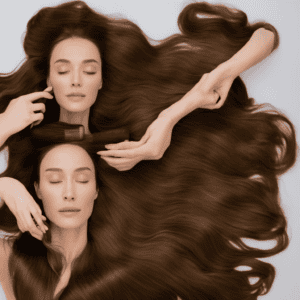You’re about to unlock the full potential of hair oil, ensuring you get the nourishment and benefits your hair deserves. To start, choose the right oil blend based on your hair type, whether it’s dry, oily, or combination. Wash and towel-dry your hair before applying oil, and consider a pre-treatment or hair mask for low porosity. Adjust the amount and type of oil based on your hair type, and warm the oil between your palms for better absorption. With these secure methods, you’ll be on your way to mastering the art of oil application – and there’s more to discover when you take the next step.
Choosing the Right Hair Oil
When selecting a hair oil, consider your hair type, scalp concerns, and styling goals to ensure you’re using a product that addresses your specific needs. You’ll want to identify the right hair oil blend for your hair type, whether it’s dry, oily, or a combination of both. If you have dry hair, look for a blend that’s rich in moisturizing ingredients like argan oil and coconut oil. For oily hair, a lightweight oil with tea tree oil or jojoba oil might be a better fit.
Some hair oils also feature essential oil infusion, which can provide additional benefits like stress relief or a refreshing scent. Essential oils like lavender and peppermint can help calm your scalp and promote relaxation. When choosing a hair oil, think about what you want to achieve – do you want to add shine, reduce frizz, or nourish your scalp? By considering your hair type, scalp concerns, and styling goals, you’ll find a hair oil that meets your unique needs and helps you achieve the hair you want.
Preparing Your Hair for Oil
Before applying hair oil, wash your hair with a gentle shampoo to remove dirt and product buildup, allowing the oil to penetrate more effectively. This ensures that the oil reaches the hair shaft and scalp without any barriers.
Next, towel-dry your hair until it’s damp, but not soaking wet. This helps the oil absorb better into your hair. If you have low hair porosity, you may need to use a pre-treatment or a hair mask to help the oil penetrate deeper into your hair.
Be cautious if you have scalp sensitivity, as some oils can irritate your scalp. Start with a small patch test to check for any adverse reactions. Also, avoid applying oil to your scalp if you have open sores or wounds, as this can lead to infection.
Applying Oil to Specific Hair Types
Depending on your hair type, you’ll want to adjust the amount and type of oil you use to maximize its benefits. Fine hair concerns, such as weighing it down or making it look greasy, can be alleviated by using lightweight oils like argan or jojoba oil in small amounts. Apply a few drops to the ends of your hair, working your way up to the mid-lengths, to add moisture and shine without overwhelming your locks.
Curly hair needs more nourishment, so you’ll want to use richer oils like coconut or olive oil to lock in moisture and define curls. Apply a generous amount to your hair, focusing on the ends and mid-lengths, to help detangle and add definition. Be careful not to overdo it, as curly hair can be prone to oiliness.
For normal to combination hair, you can use a balanced oil like sweet almond or grapeseed oil, applying a moderate amount from mid-lengths to ends to add moisture and shine. Remember to always start with a small amount and adjust as needed, as everyone’s hair is different.
Common Hair Oil Application Mistakes
You’re likely to cancel out the benefits of hair oil if you’re making these common mistakes in your application routine. One of the most common mistakes is over oiling, which can lead to greasy, weighed-down locks. The consequences of over oiling can be damaging, causing your hair to look limp and lifeless. Additionally, oiling dirty hair can prevent the oil from penetrating the hair shaft, rendering it ineffective.
Another mistake is applying oil to hair that hasn’t been washed in a while. If you oil dirty hair, the oil will just sit on the surface, failing to nourish your hair. This can lead to product buildup, which can cause more harm than good. To avoid this, make sure to wash your hair before applying oil. By being mindful of these common mistakes, you can ensure that your hair oil application routine is effective and beneficial for your hair.
Mastering the Art of Oil Application
To master the art of oil application, start by warming the oil between your palms to increase its absorption and penetration into your hair. This simple step can make a significant difference in the effectiveness of your hair oil treatment.
As you massage the oil into your scalp, focus on stimulating blood flow to promote healthy hair growth. This gentle scalp stimulation can help to increase oil absorption rates, allowing the nutrients to deeply nourish your hair.
When applying the oil, use long, gentle strokes to work it from roots to ends. Be patient and take your time, as this process can help to distribute the oil evenly and promote maximum absorption. Remember to focus on the ends of your hair, which tend to be the driest and most prone to split ends.
Conclusion
You’ve made it to the end of our hair oil application guide! Now, you’re equipped with the knowledge to choose the perfect oil, prep your locks, and apply it like a pro.
Remember, mastering the art of oil application takes practice, so don’t be too hard on yourself if it doesn’t come together right away. With time and patience, you’ll find the perfect technique to make your hair look and feel amazing.
Happy oil-ing!






